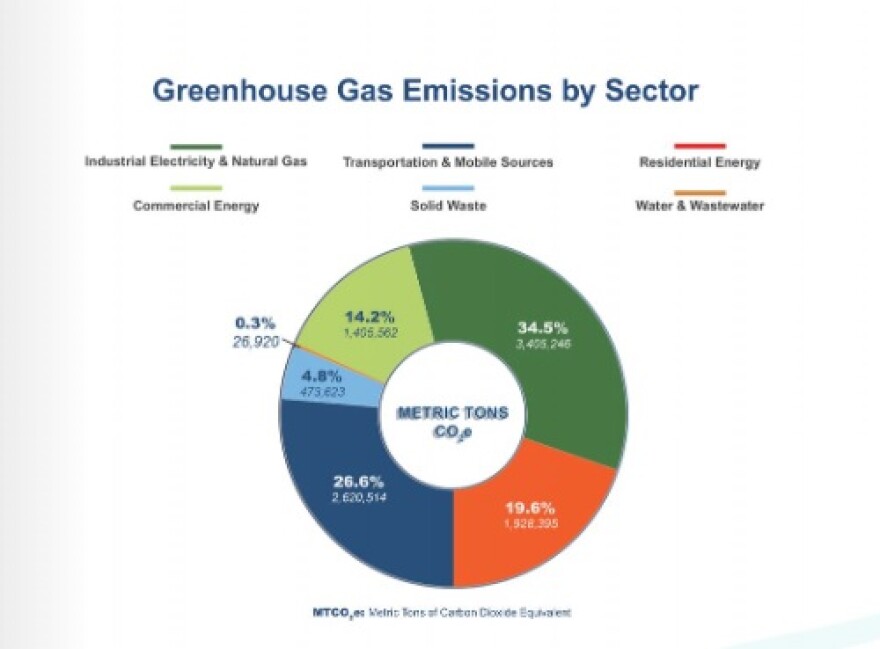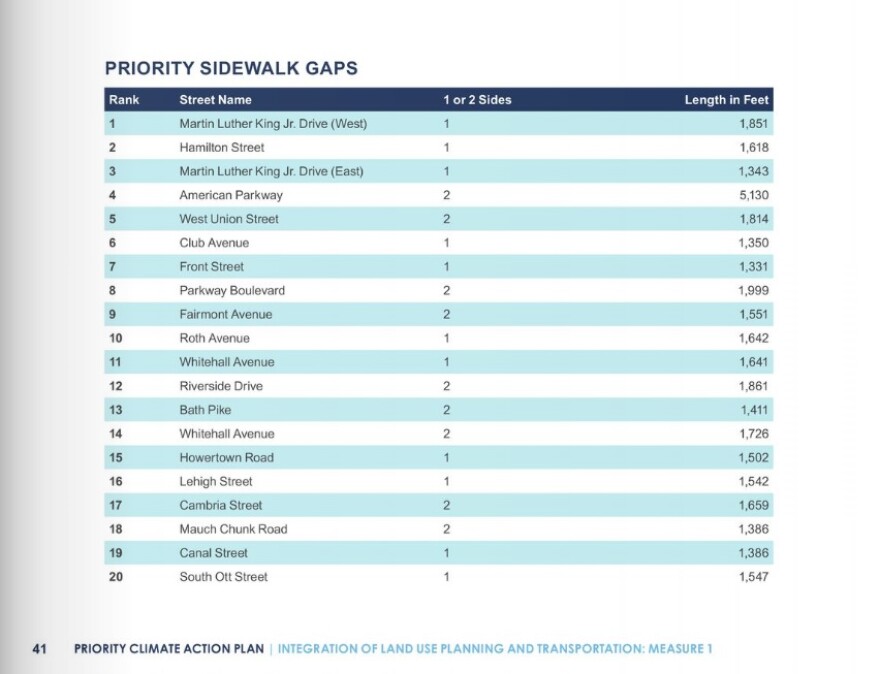ALLENTOWN, Pa. — When it comes to stemming the effects of climate change, the Lehigh Valley has a dilemma, officials said.
“The region is experiencing more extreme weather events, and with two major rivers and an extensive stream network, it is now even more vulnerable to flooding,” according to the Lehigh Valley Planning Commission’s draft Priority Climate Action Plan. “At the same time, the beauty and high quality of life here makes it attractive to more people and businesses, making it one of Pennsylvania’s fastest growing regions.
“The dilemma is more people and businesses typically result in more carbon emissions.”
The LVPC last week released a draft of its Priority Climate Action Plan, a grant-funded document almost a year in the making aimed at tamping down the region’s carbon emissions and mitigating the effects of climate change. Officials are still seeking feedback on the plan, which focuses on the region’s robust transportation sector, and is due to the Environmental Protection Agency next month.
“The plan seeks to reduce emissions from our transportation sector by nearly 300,000 metric tons of carbon equivalent (CO2e) by 2030, and substantially more by 2050, by creating priority bicycle and pedestrian corridors, promoting alternative fuels vehicles, installing intelligent transportation systems technology and creating green infrastructure along our busiest highways,” according to an email sent to community partners with the draft.
With the draft due March 1 to the EPA, officials are seeking comments at the next “WorkshopLV: Transportation Decarbonization,” slated for 11 a.m. Feb. 21.
‘$4.6 billion in implementation funding’
The Lehigh Valley, along with two other of the commonwealth’s largest metropolitan areas, last year was awarded an infusion of federal funding to fight climate change.
Commonwealth officials, who also received federal funding to create a statewide climate action plan, in April announced the Lehigh Valley Planning Commission had been awarded $1 million by opting into the Climate Pollution Reduction Grant program, part of the federal Inflation Reduction Act.
The funding came a little over a month after LVPC published its greenhouse gas assessment. The study showed the Valley’s 2019 emissions made up just shy of 4% of the commonwealth’s total gross greenhouse gas emissions.

About 35% of the Valley’s total emissions were attributed to industrial electricity and natural gas, while about 27% was from transportation and mobile sources, according to the study.
As a condition of the funding, the LVPC must create a Priority Climate Action Plan, or PCAP, as well as a Comprehensive Climate Action Plan, or CCAP. The former is due March 1.
This is a seminal moment as this region works to mitigate the effects of climate change.Lehigh Valley Planning Commission officials in an email to stakeholders and community partners
“This is a seminal moment as this region works to mitigate the effects of climate change,” officials said in the email. “The plan is scheduled to be sent to the EPA before the March 1 deadline, where if accepted, would open the region to an IRA pool of $4.6 billion in implementation funding, and be followed in the summer of 2025 by a Comprehensive Climate Action Plan that would provide a blueprint to reduce emissions from all sectors.”
What’s in the draft?
Over the past several months, the LVPC has hosted at least five workshops with community stakeholders to brainstorm and discuss strategies to stem the impacts of climate change region-wide, focusing on the transportation sector, to include in the PCAP.
More than 135 volunteers contributed during the workshop series, officials said.
The scope of the plan, circulated to community partners across the region, encompasses the entire Allentown-Bethlehem-Easton Metropolitan Statistical Area, which includes Lehigh, Northampton and Carbon counties in Pennsylvania, as well as New Jersey’s Warren County.
There are six priority measures outlined in the more than 100-page draft “specifically tailored for transportation decarbonization.” Only those included in the PCAP can be eligible for implementation grants.

They include:
- Implementing priority bicycle commuting corridors and catalytic projects, and priority sidewalk gaps as proposed in Walk/RollLV.
- Increasing transit ridership above current levels in the Lehigh Valley
- Increasing development of alternative fuel vehicles (AFVs) of all types in the region from 2022 baseline figures.
- Increasing the number and geographic distribution of alternative fueling stations in the region.
- Reimagining and retrofitting major transportation corridors, including Route 22, Route 33, Interstate 78 (I-78), and Interstate 476 (I-476 Northeast Extension of the Pennsylvania Turnpike) to include additional green spaces, enhanced native and non-invasive landscaping and tree canopy and nature-based stormwater management practices.
- Implementing Intelligent Transportation Systems (ITS) technology to reduce congestion, support uniform traffic control standards and encourage trip planning technology applications for all modes of travel.
Each measure includes targets, estimates for greenhouse gas reduction, as well as a listing of low income and disadvantaged communities will benefit.
At least 40% of the benefits from grant funding must occur in low-income and disadvantaged communities as defined in the White House's Climate and Economic Justice Screening Tool.
The Valley’s three major cities — Allentown, Easton and Bethlehem — are all considered “disadvantaged,” according to the screening tool, described as “overburdened and underserved.”
Applications for implementation grants are due April 1. Federal officials are expected to notify grantees in July before awarding funds in October.


